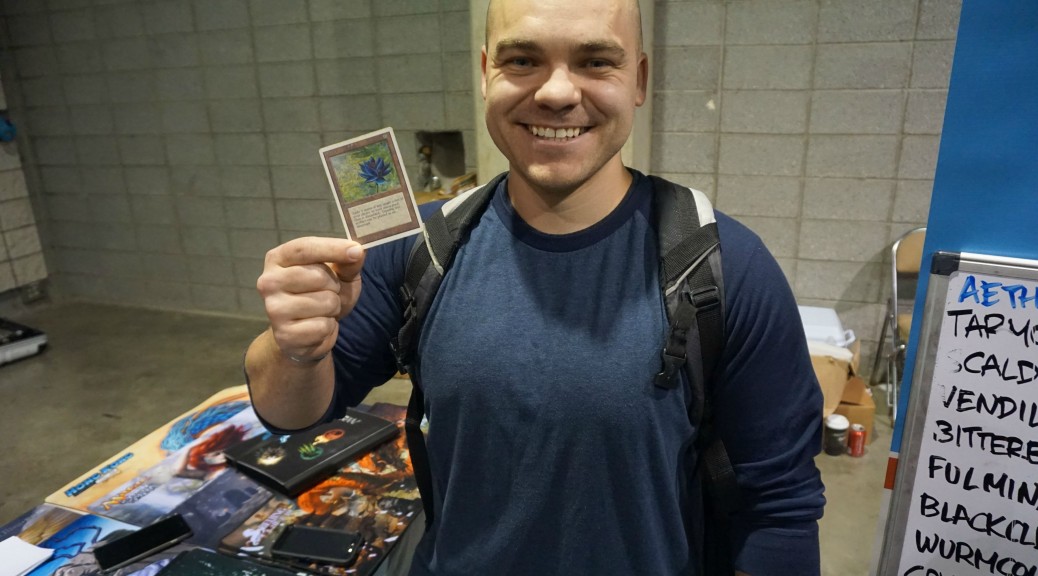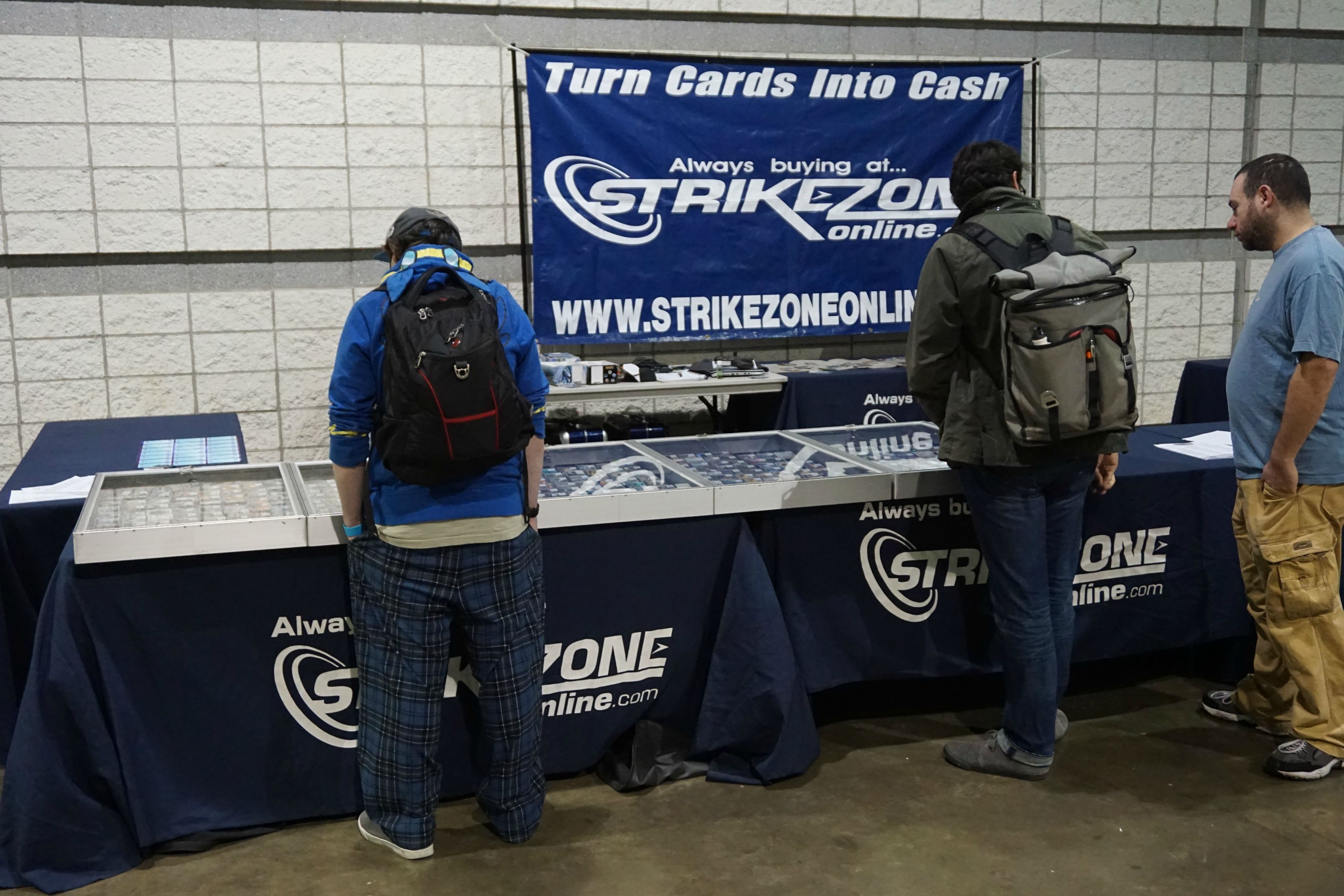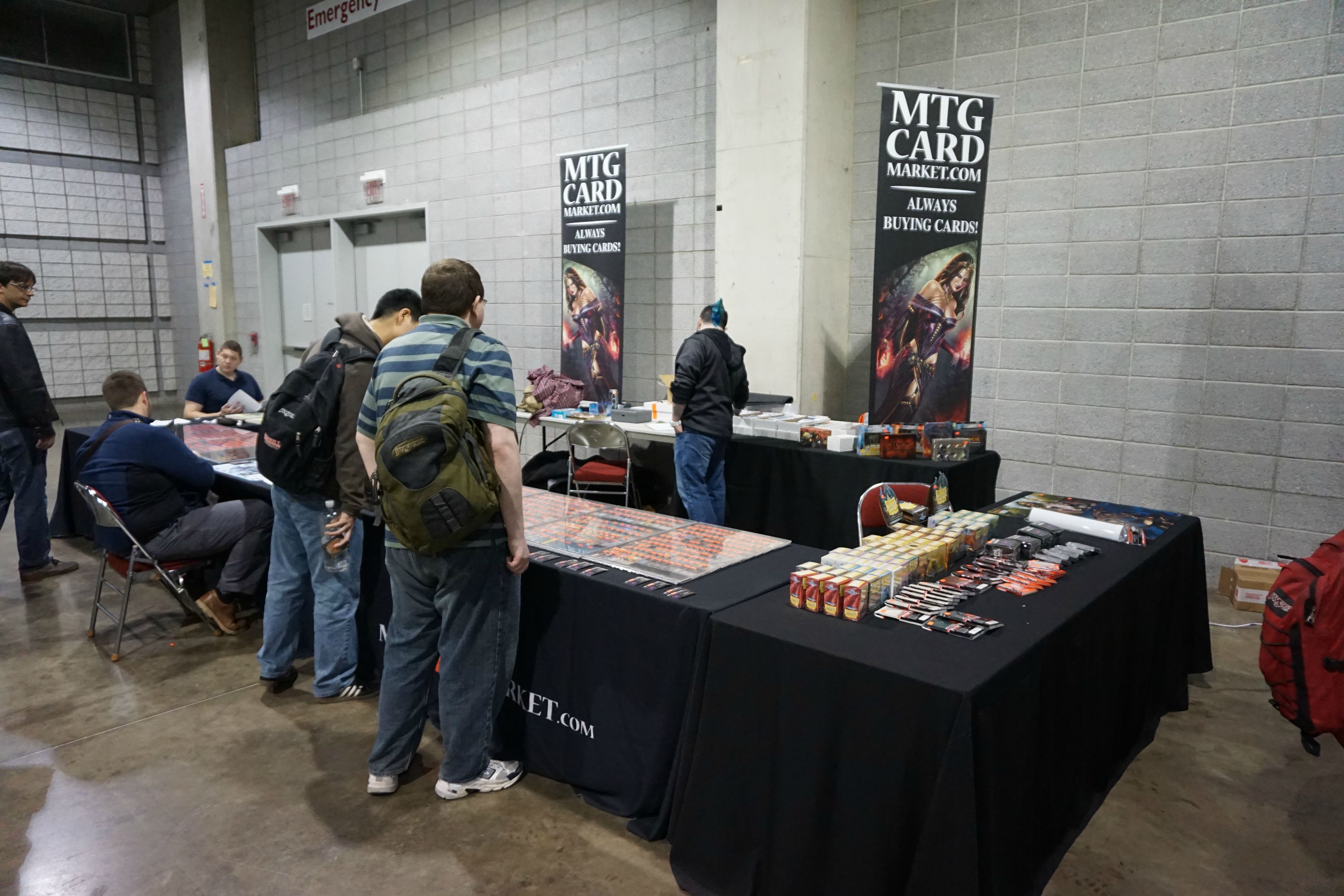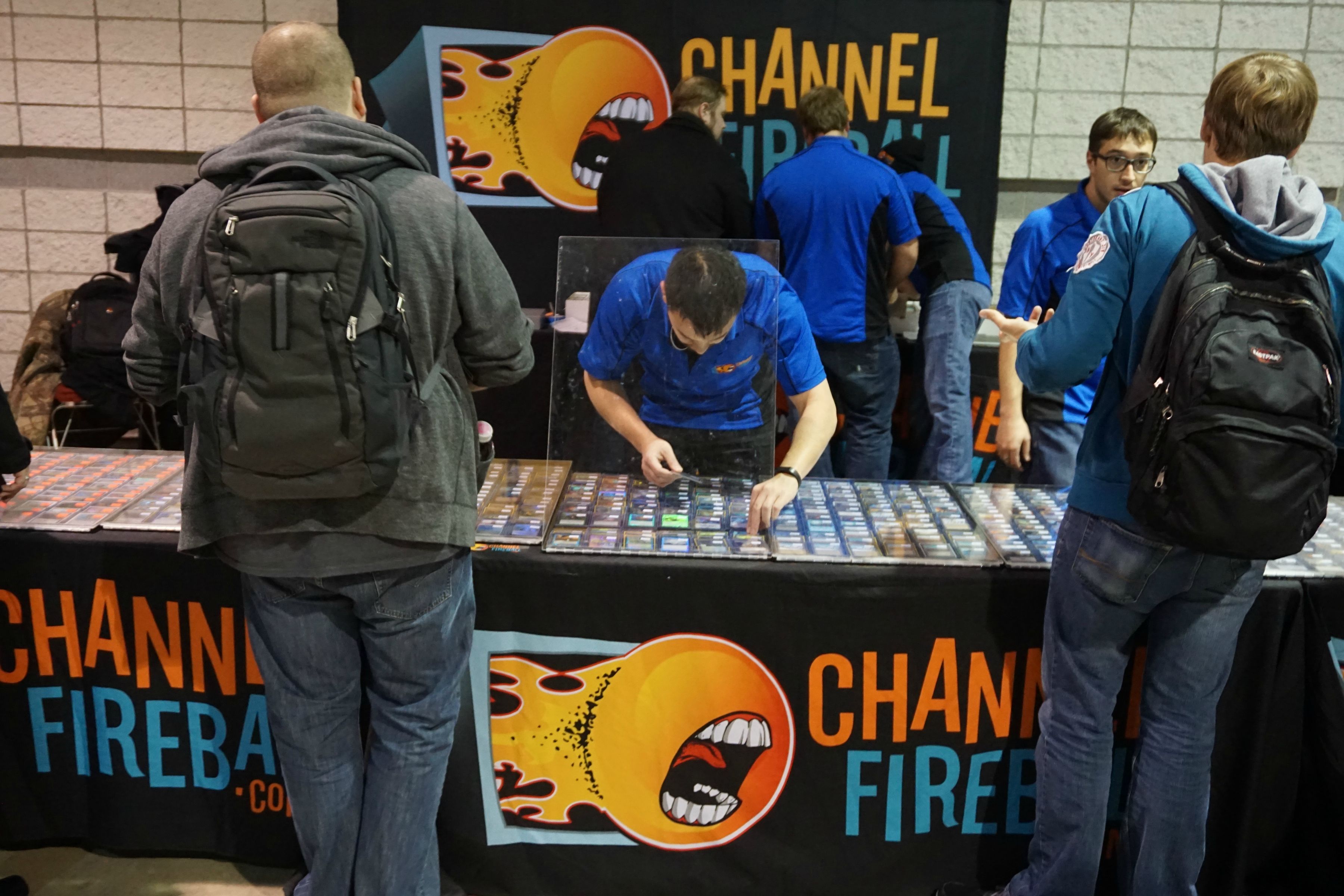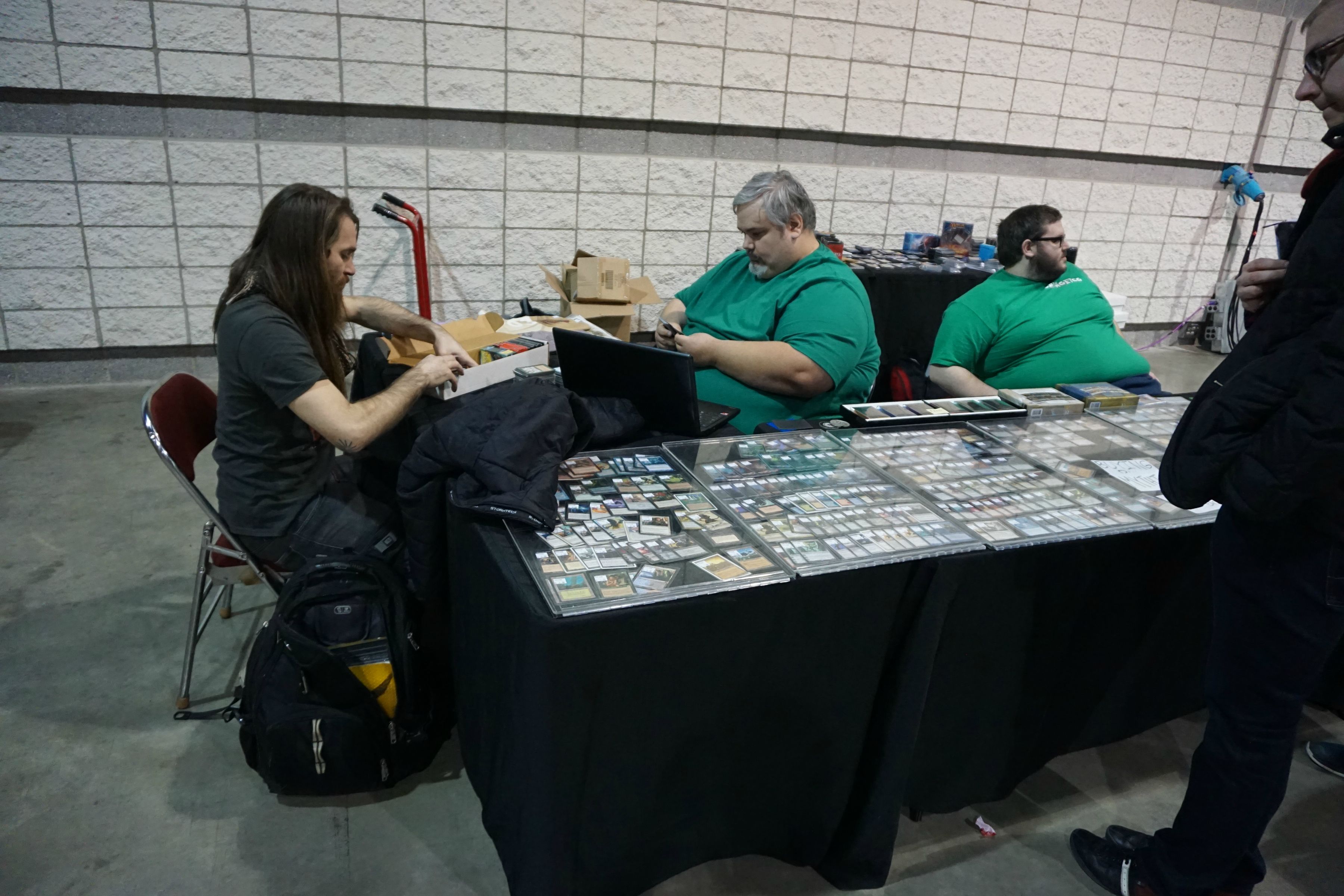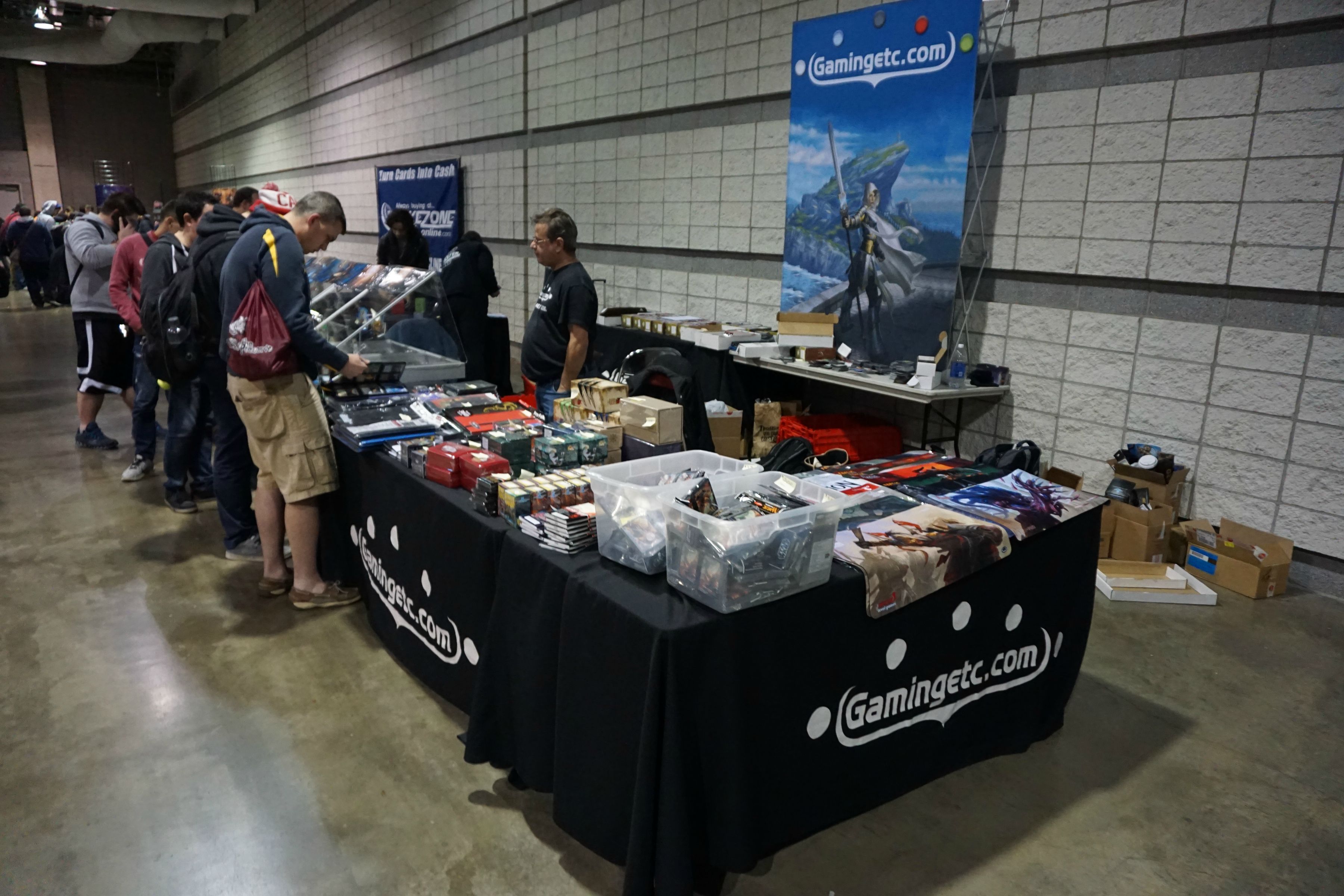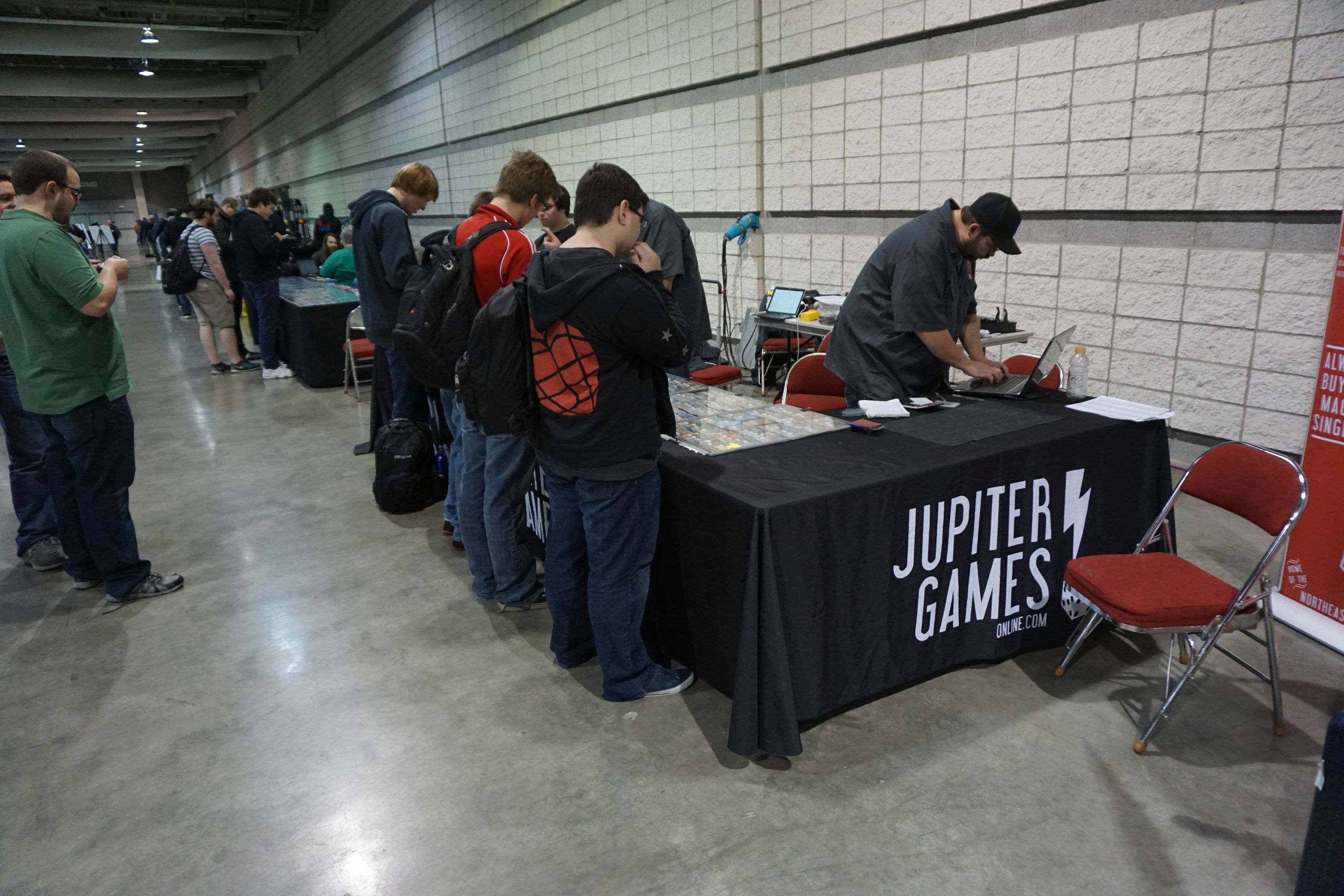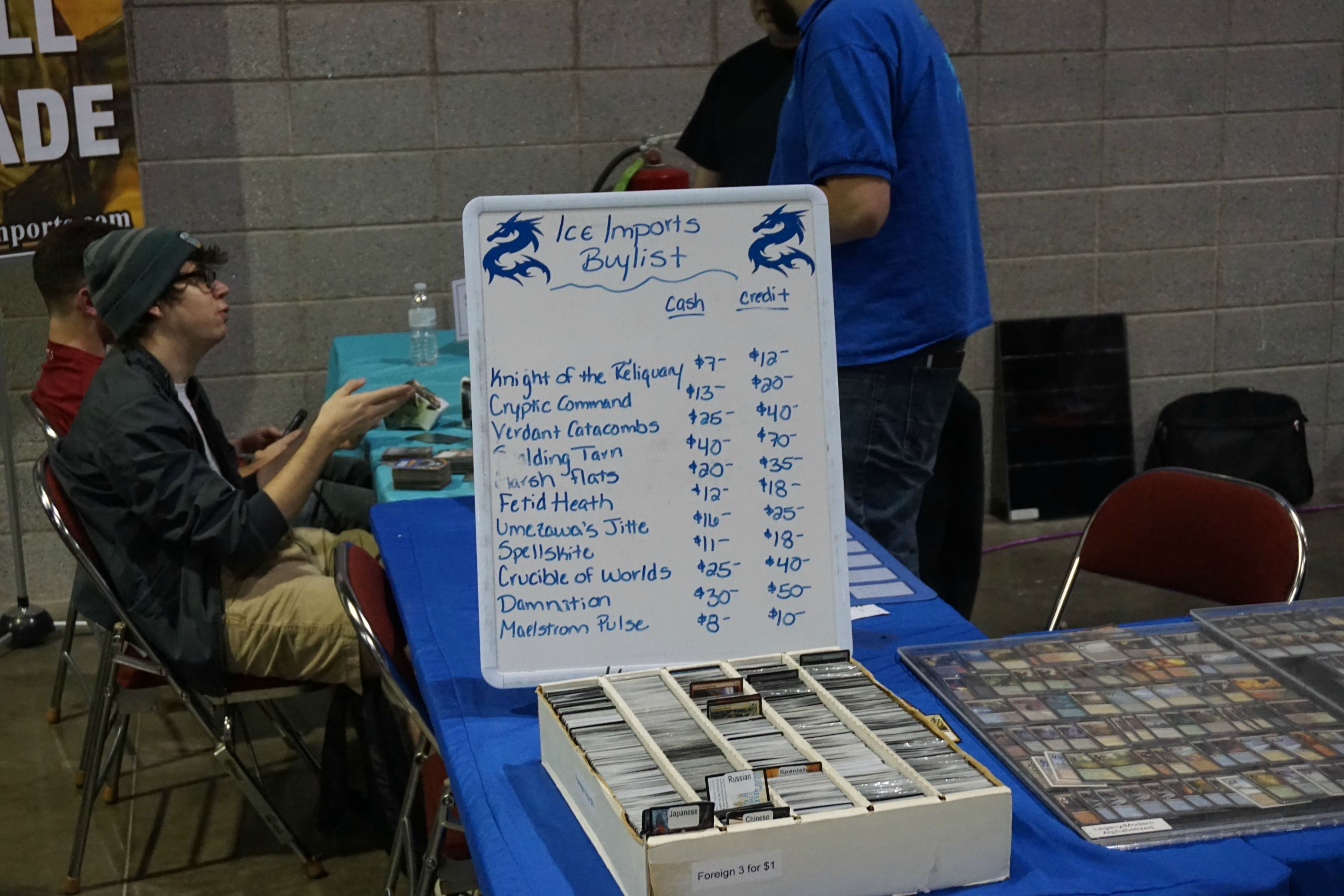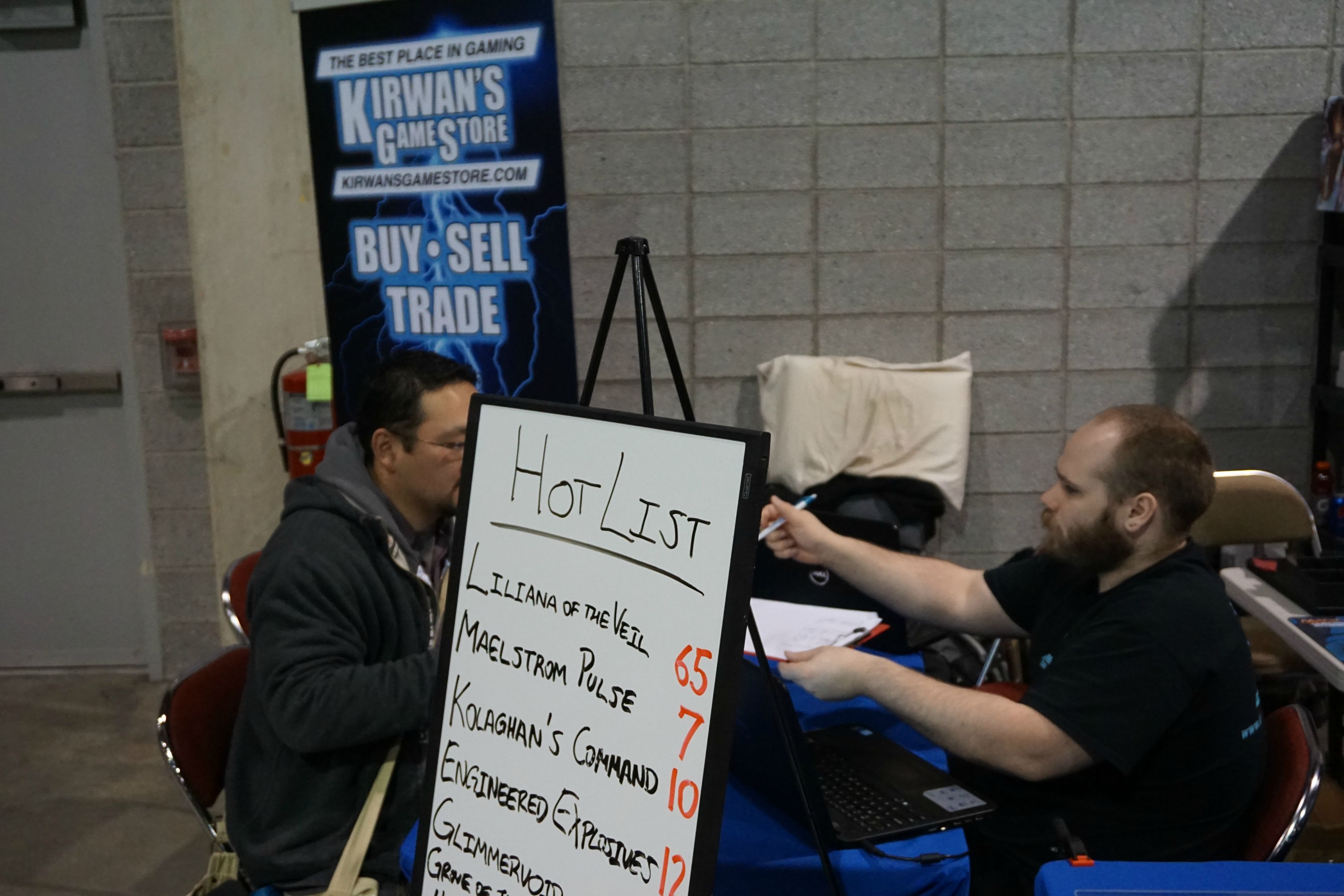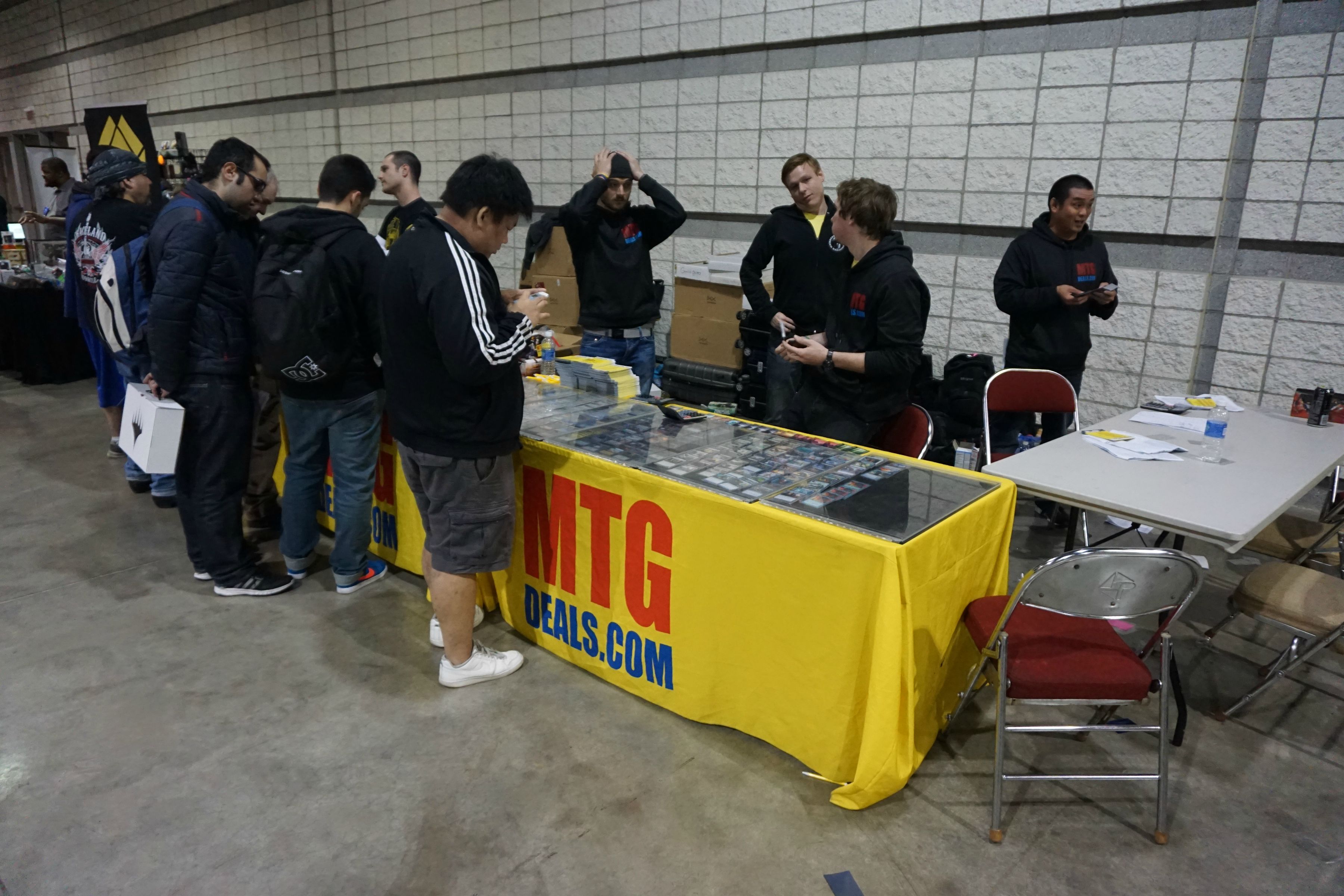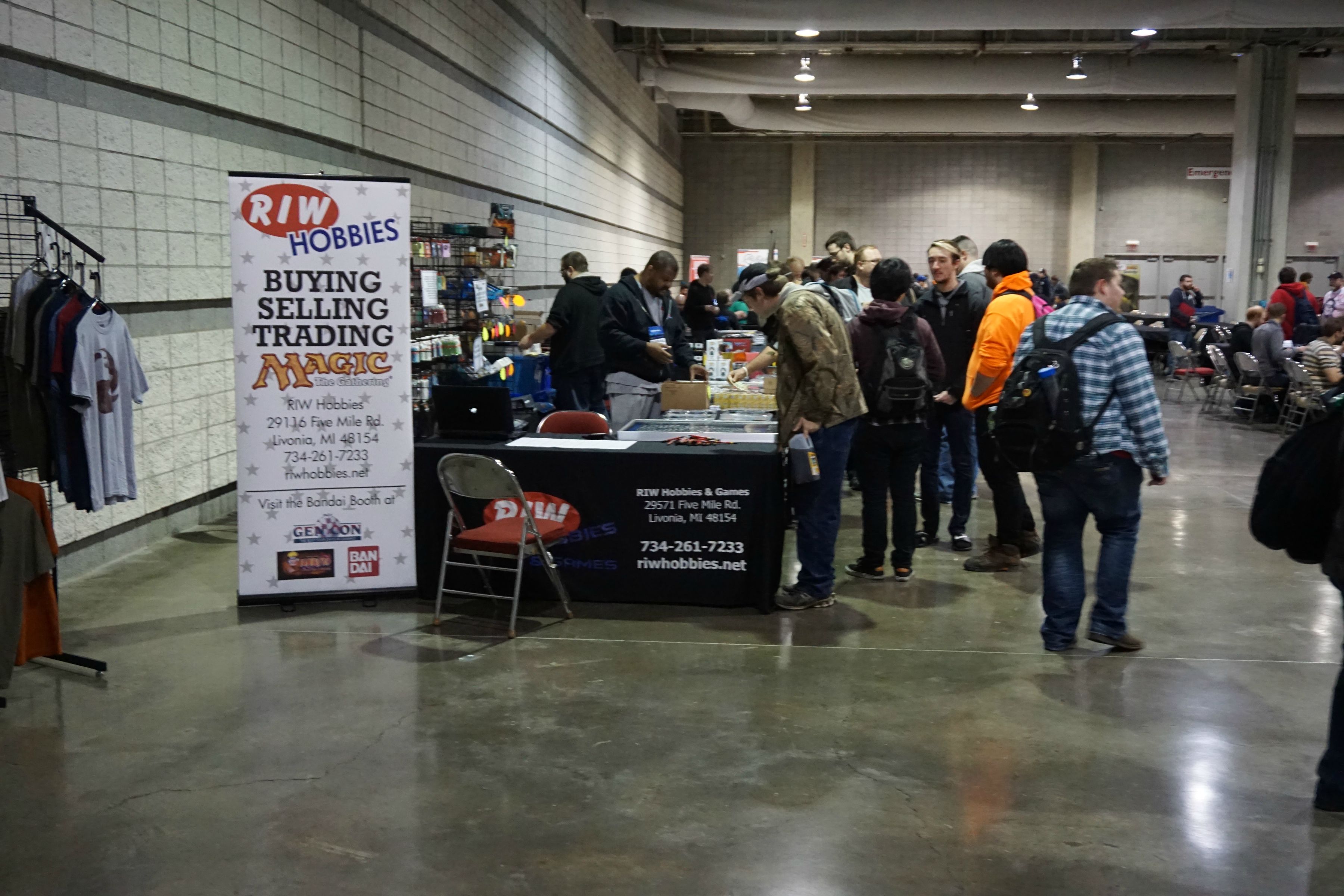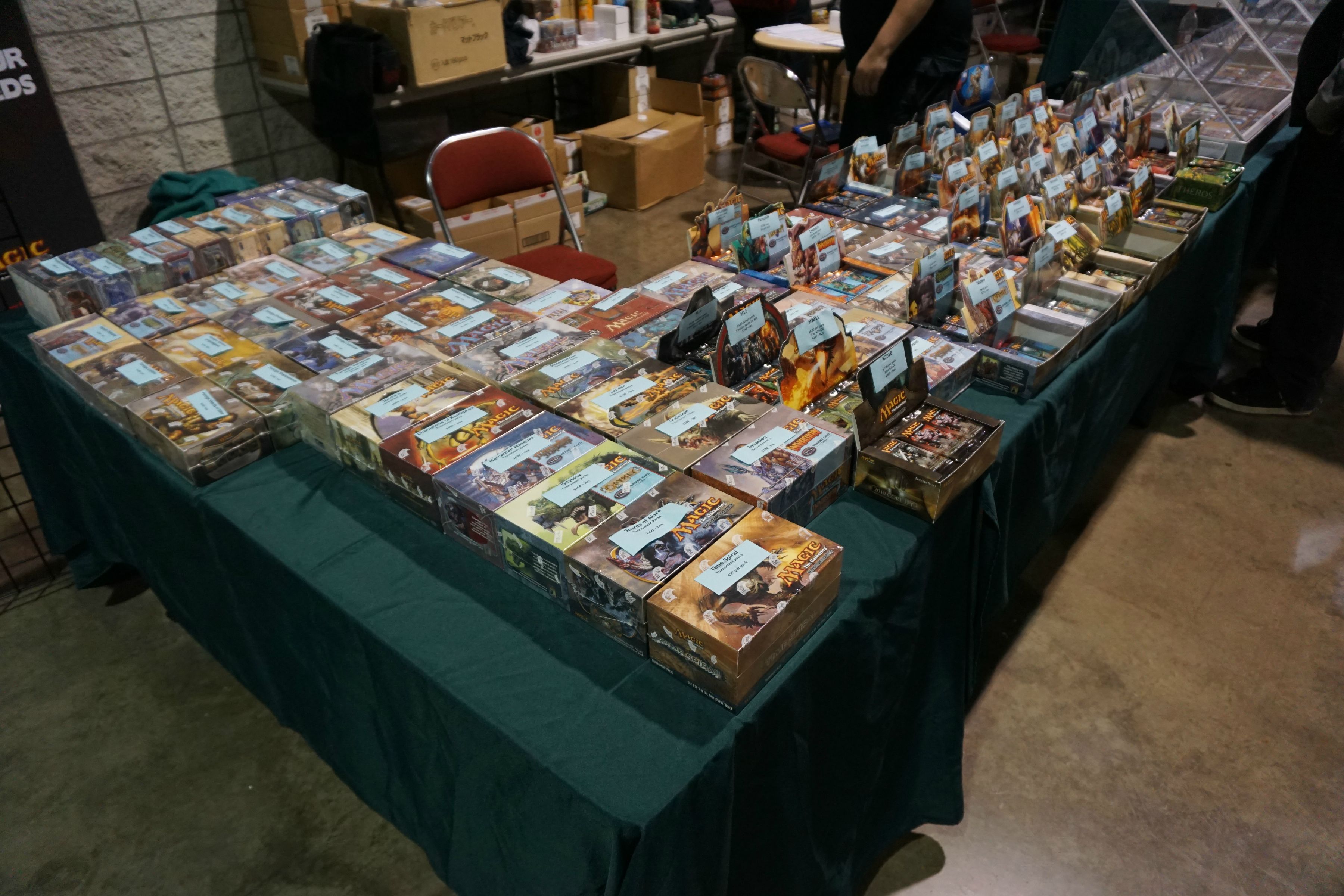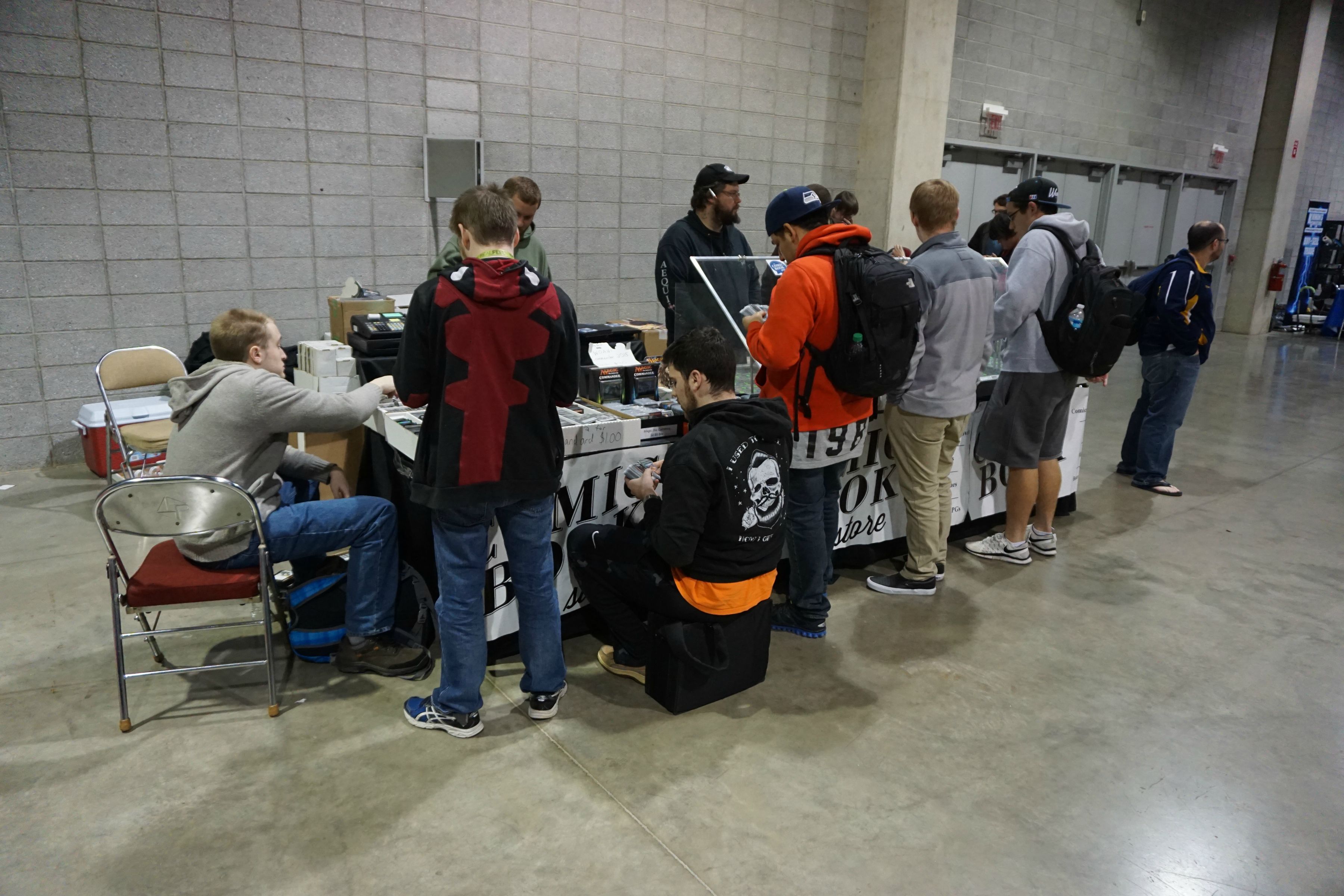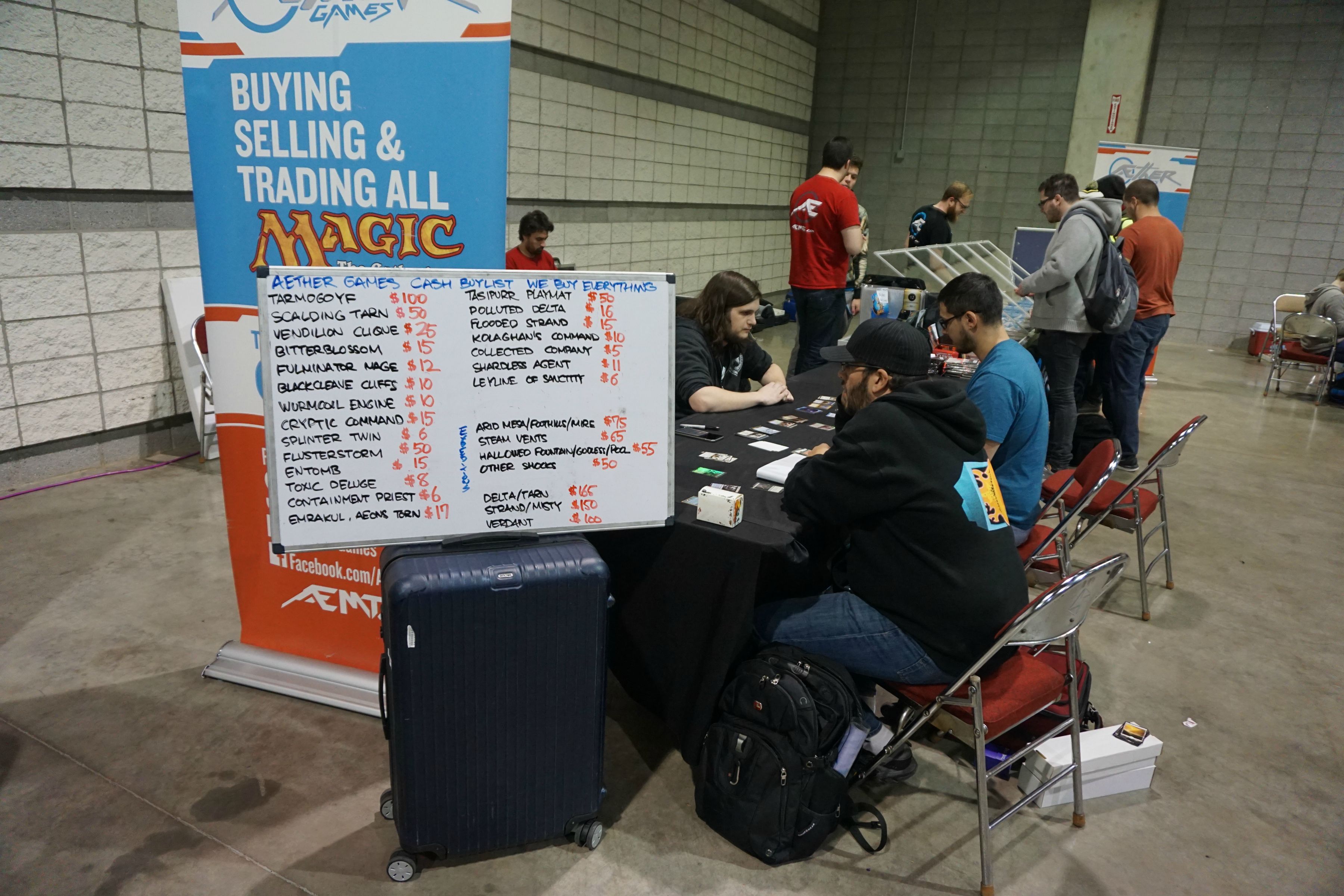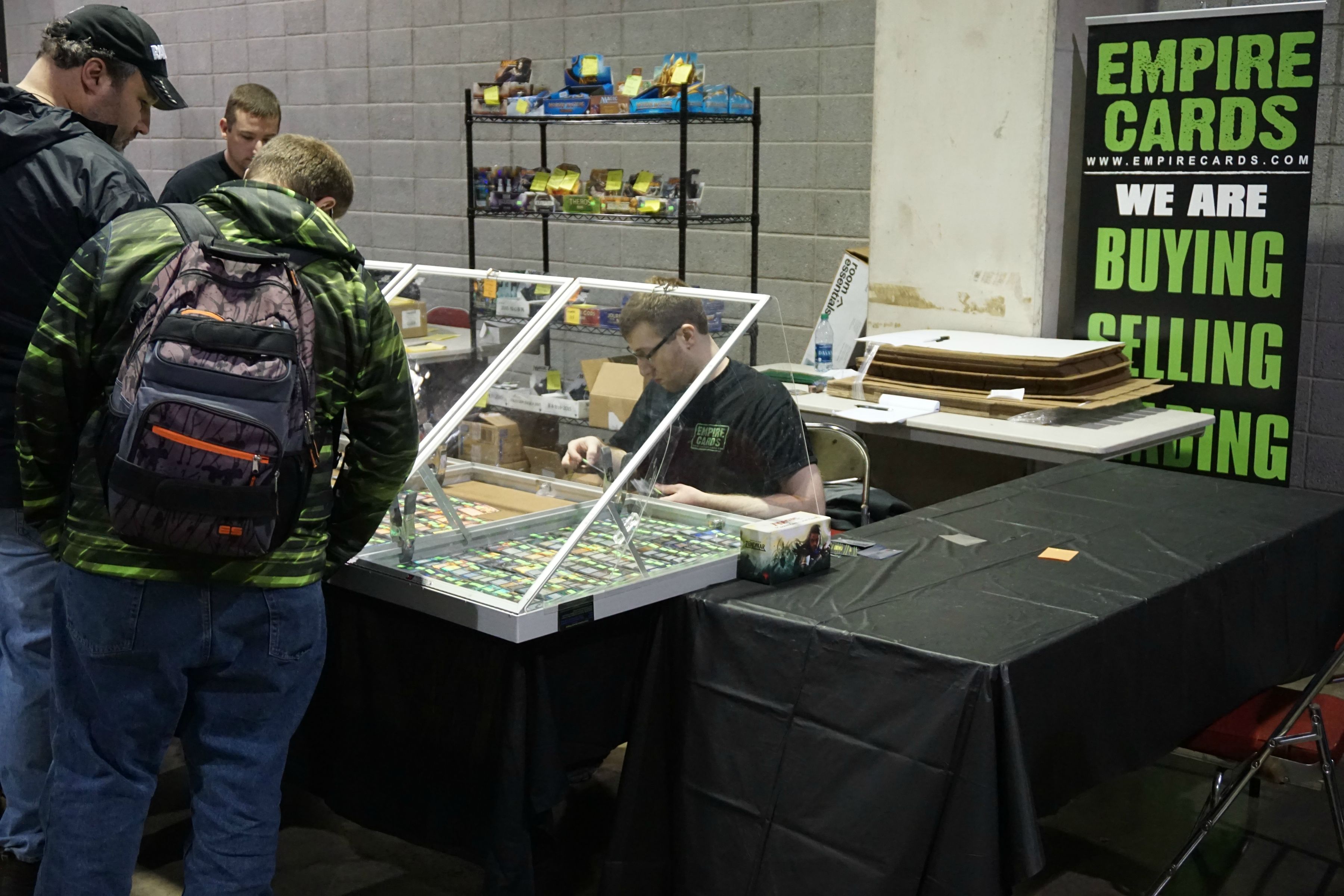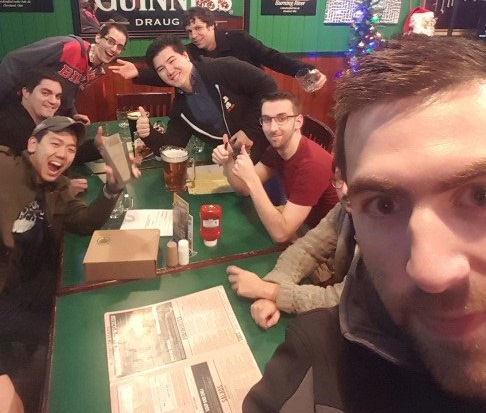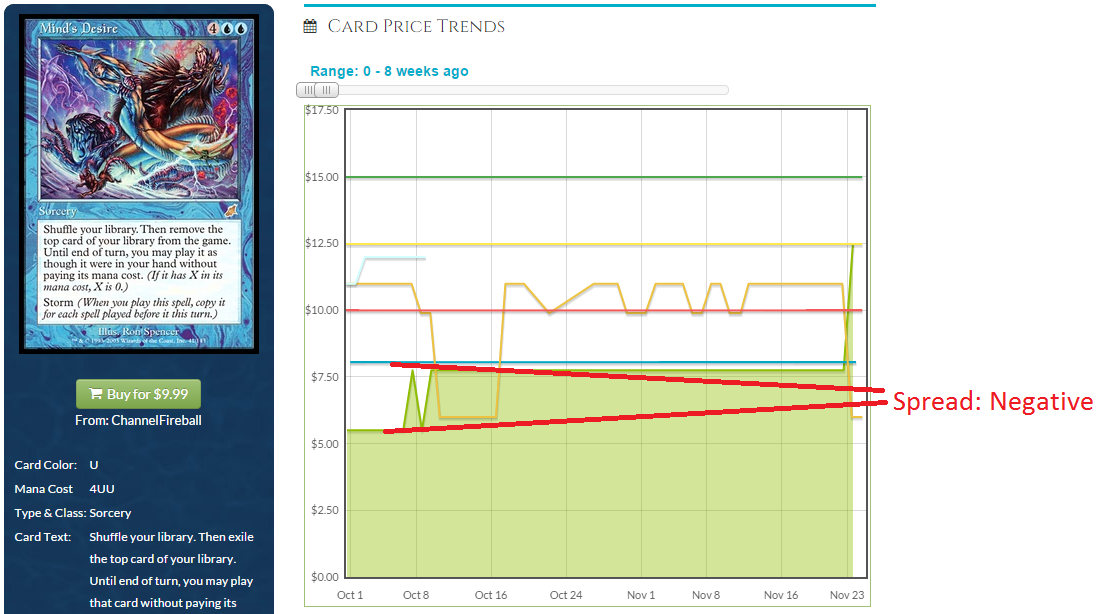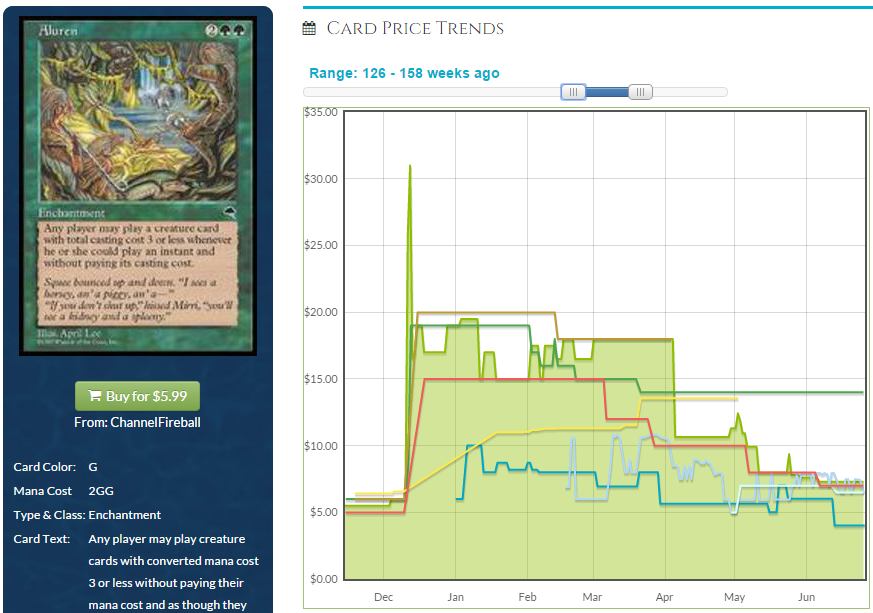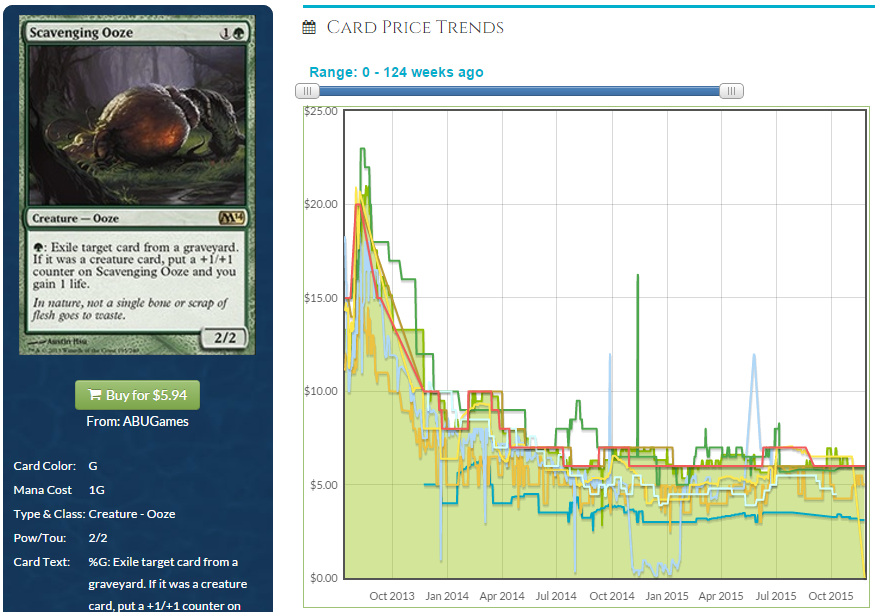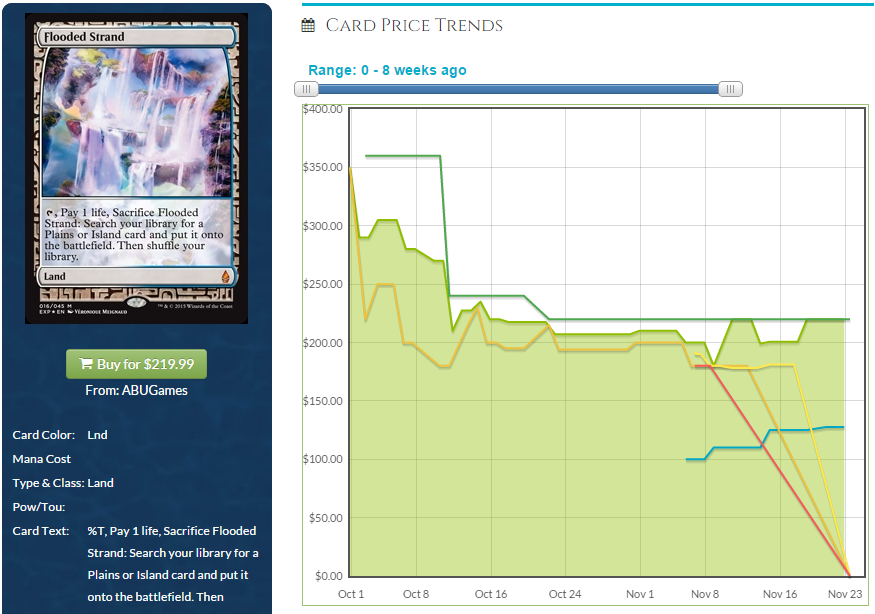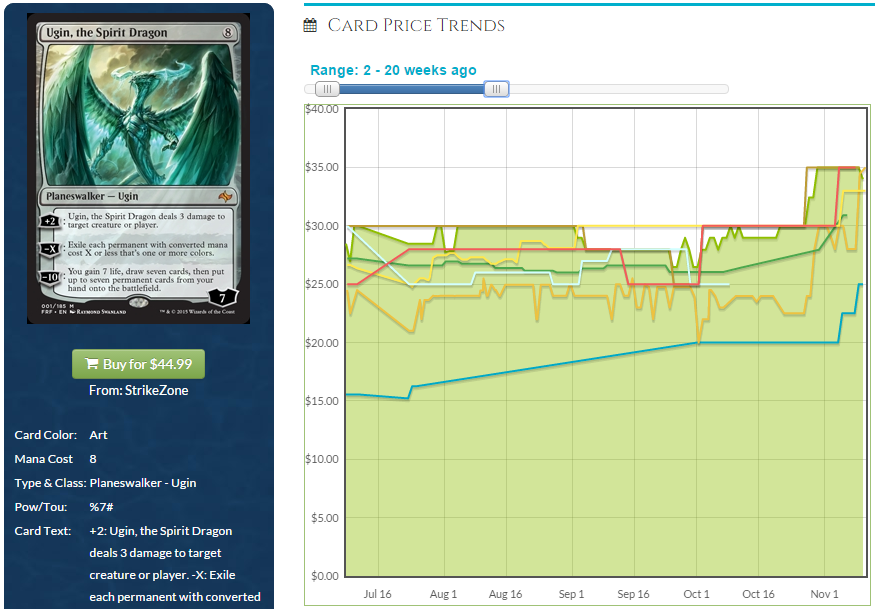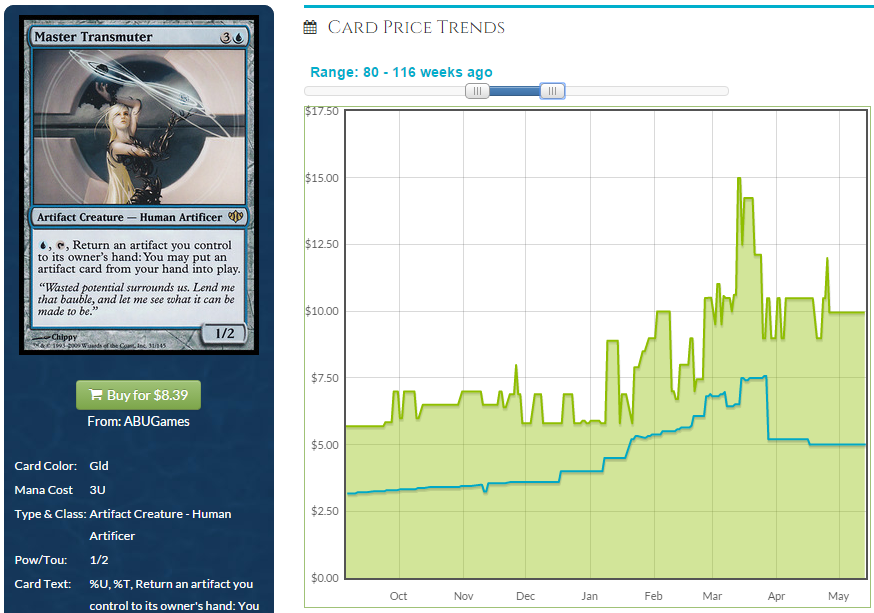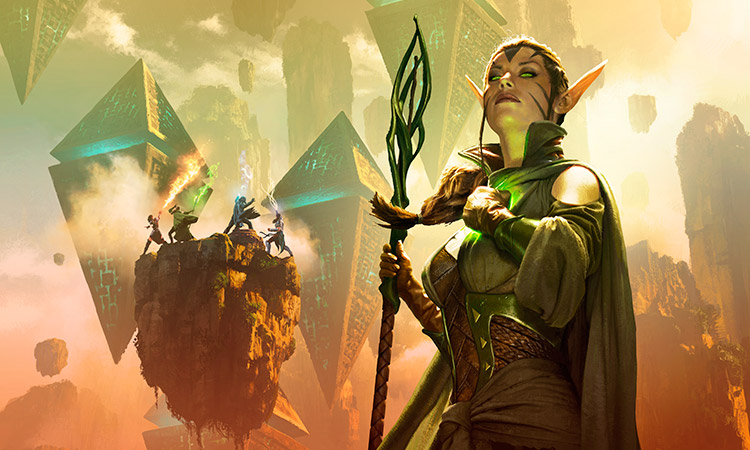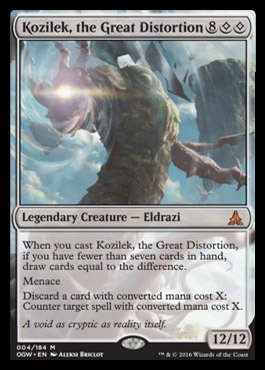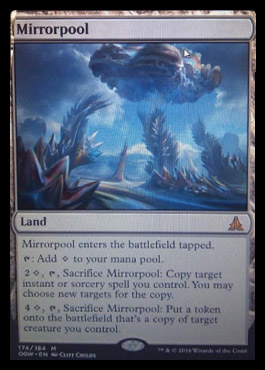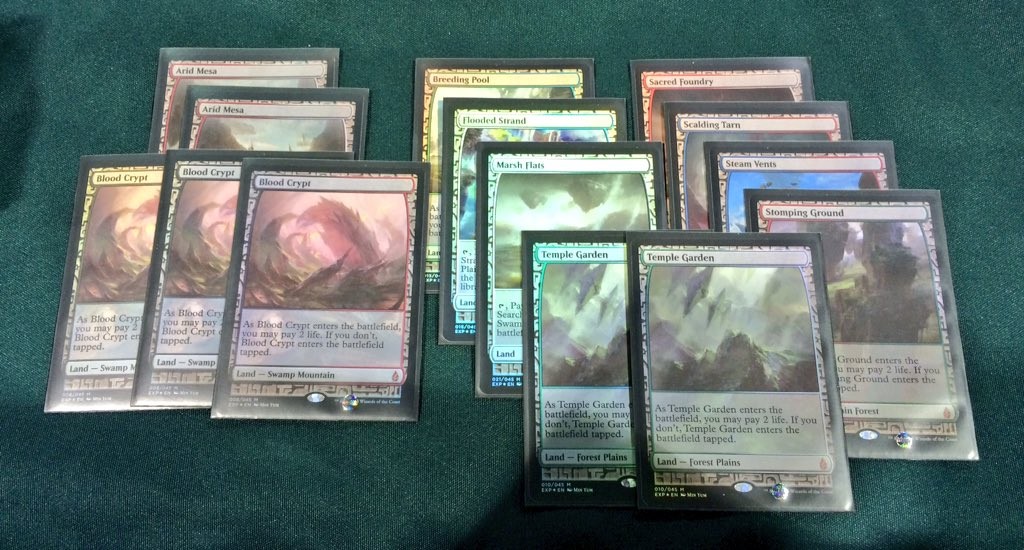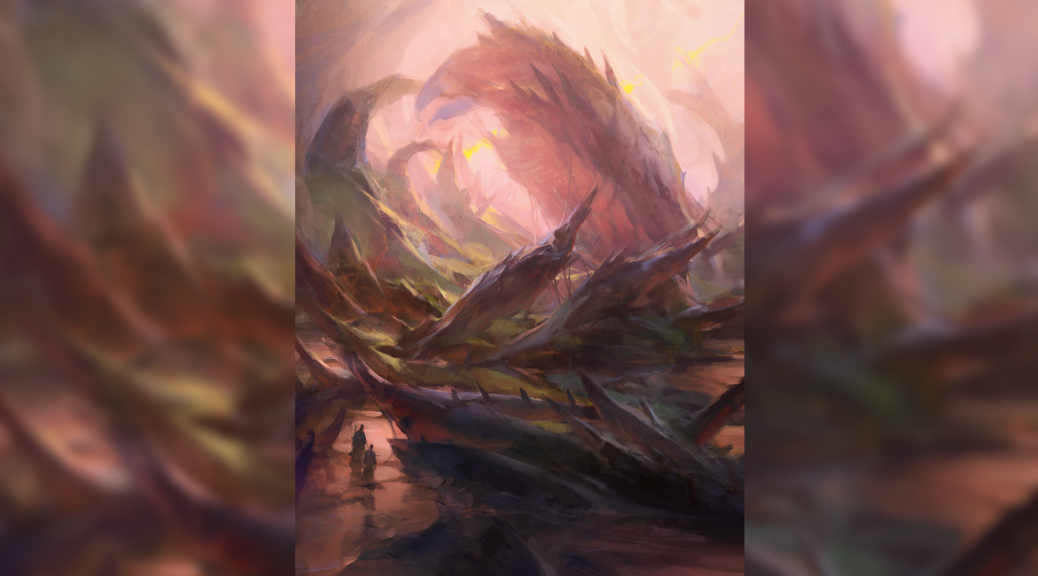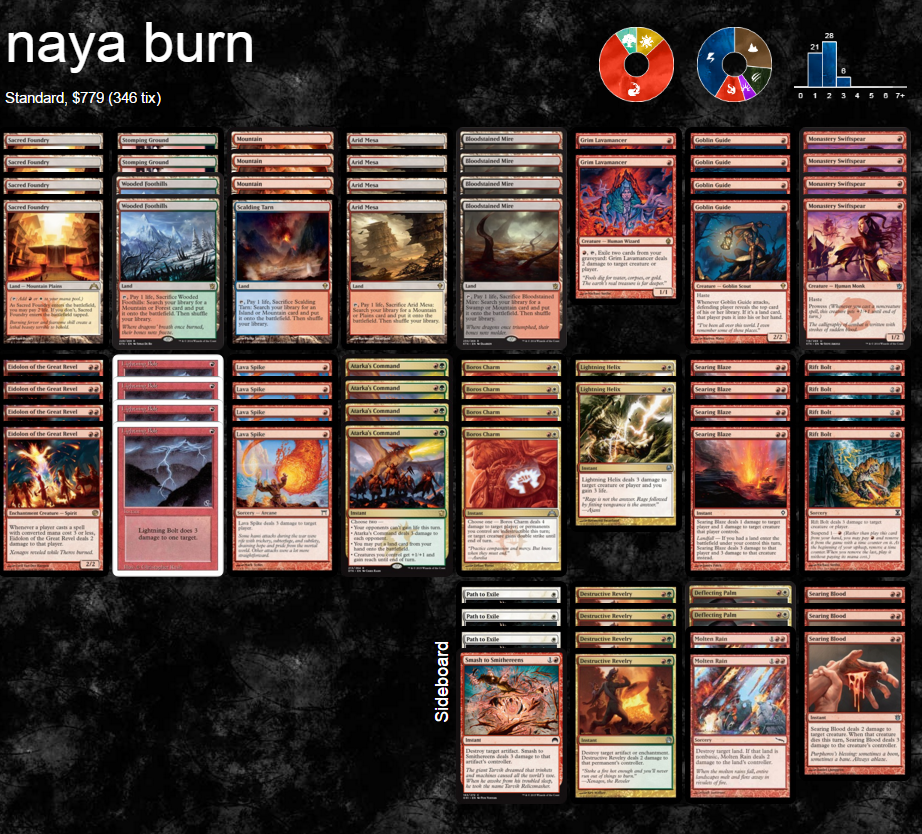Hey guys! GP Pittsburgh was a great event to go to if you were looking to grind the tables and buy some cards. With prices in their seasonal decline, many opportunistic players were there looking to acquire underpriced staples and discounted deals. I myself did not play sanctioned magic at all during the weekend, and I’m sure that the other price writers present will be covering what happened with the TO and the GP as a whole. I can say that because the venue was packed, many grinders had extremely good weekends and I was lucky enough to partake in the spoils. After feedback on my twitter account from these articles, I also will be grading the vendors just like school. Let’s get into the plethora of vendors!
Strike Zone
StrikeZone seemed to barely be vending this weekend. They left early all three nights, and were one of the later vendors to be arriving on site during Sunday morning. I think they ran out of cash due to their proximity to the entry hall, and as a result didn’t have to grind the long hours that the vendors farther away from the action had to. Their buy prices weren’t the best, but there were enough people selling to them to make their booth worth it. The weirdest part about buylisting to StrikeZone was the fact that they make you organize the buy piles into set and alphabetical order, which is something few lazy Magic players do. They used to be one of the top vendors to sell to, but it seemed that their prices waned with the sun at this GP. I sat down with them as they perused through my binders, but said no to all of their offers confident that I could get more for my cards elsewhere this weekend.
Grade: C (Average)
MTG Card Market
MTG Card Market was at the very end of one of the two rows of vendor tables. They seemed to get little traffic because of this, and their buy prices weren’t amazing. They did however grab quite a few quarters this weekend out of my ogre box, perhaps in an attempt to get cards in at all! Jameson was quite friendly to everyone who stopped by however, and quite a few Chicago locals were selling to them this weekend.
Grade: C (Average)
Channel Fireball
Channel Fireball had a booth about four booths down from the GP entrance. They were packed all weekend, and paying highly on miscellaneous cards. As a GP mainstay, many people were selling to them due to their brand loyalty and credit bonus. Their buyers were very friendly and I sold a couple hundred dollars of mid-priced cards to them. Taking credit, I was able to pick up some blue-chip modern staples such as Noble Hierarch and Thoughtseize that I’m confident will see nice returns next year. They also bought over 100 Snapcaster Mageand 100 Rhystic Study from individual buyers, which was pretty funny to see.
Grade (B) Above Average
Savage TCG
Savage has vended the last couple GPs in a row. They always seem to attract a crowd, but didn’t have any stellar buy prices this weekend. They did, however, have low prices on played cards and had multiple Legacy staples at attractive buy prices all weekend. It seemed that they sold a lot of these to cube enthusiasts as quite a few happy people walked away with new cards. I didn’t sell anything to them or buy, but I always like to stop by and see what they have for sale.
Grade ( C) Average
Gaming ETC
Gaming ETC had an interesting booth setup this weekend. Half of their booth was covered in miscellaneous Magic products such as playmats and sleeves, compared to other vendors’ higher-margin items like packs and played binders. I wasn’t happy with their high sell prices and low buy prices, and the demeanor of their buyers didn’t make it seem like they were happy to be there.
Grade (D) Below Average
Jupiter Games
Jupiter seemed sparsely populated all weekend. They had both low buy prices and high sell prices. Their buyers seemed to be on their phones for most of the GP, and they only seemed animated during the busy Saturday morning. Next time, I don’t think I’m going to stop by Jupiter if this trend continues.
Grade (F) Unsatisfactory
Wizard Tower.com
Wizard Tower was one of the most interesting vendors this weekend. They had electronic boards that made seeing buy prices easy. They also had some of the highest buy prices on casual cards this weekend, and had the line to show for it. The weirdest thing about their buying practice was that they manually looked up inventory numbers of each card that they were interested in buying. Selling to them took about twice as long as usual, which was fine for me as I wasn’t playing in the GP, but could be harder for those who were. They almost ran out of money on Saturday, as I was paid quite a bit of money in $5 dollar bills. However, their buying staff was top -notch and friendly. I’ve never seen them vend a GP before, but they will be one of the first stops I make if I see them at another. Phil was one of the nicest buyers I worked with all weekend, and made small talk with me while waiting for their inventory to load on his computers.
Grade (A-) Excellent
Ice Imports
Ice Imports is another vendor that has been showing up lately at many of the GPs. They had sell prices somewhere between TCGLow and TCGMid, which was pretty good for a booth. I wasn’t a fan of their buy prices, but they did have quite a few people selling them cards. Their buyers were asking people as they walked buy to sell them cards/ look at their shelves, which means they weren’t just sitting there during slow booth times. Busy times for booths happen between the breaks in each round when players are killing time, and slow times happen during the first 15 minutes of each round.
Grade ( C) Average.
Kirwan’s Game Store
Kirwan had a small booth in a corner of the room. It didn’t seem that they were buying many collections, but the people selling to them were selling giant collections that took quite a bit of time to buy in. I didn’t sell anything to them, but their hotlist was around 5% less than the top buylists in the room which wasn’t bad if you were looking to get credit for a specific card.
Grade (C ) Average
MTG Deals
MTG Deals has earned the reputation of one of the top vendors to stop by first at any GP. They definitely lived up to it as this GP. They had a pretty busy booth, and solid buy prices. I sold 10 Expeditions to them at barely below TCGLow, and their buyer Dave was friendly. He also offered a higher number on cards after I said no to the initial offer, which was a nice change of pace. At GPs you can always barter with vendors on high-end cards on the numbers you want, but it was nice to see him haggle with me on $20-$50 cards. I would recommend stopping by MTGDeals as one of the first booths at any GP.
Grade (A-) Excellent
Coolstuffinc
Coolstuff Inc also had a ton of traffic this weekend. I bought quite a few $16 original Modern Masters packs from them. Although the EV of the packs was great, my pulls weren’t. I sold them quite a few cards that they were paying extremely highly on, such as Modern Masters Slaughter Pact at $7. Their buyers were friendly, and I was satisfied with some of their cards in their played/ foreign binders such as a japanese copy of All is Dust at $4.
Grade (B) Above Average
RIW Hobbies
Being one of the booths directly next to the doors of the room, RIW was quite busy this weekend. They had cards at retail prices, but had a ton of people buying from them. Customer service was exemplary with Marcel doing his best to accommodate weird card requests and talking about the history of the shop with people. They brought all of their sealed product and product damaged from their fire that had happened a couple months ago in a discounted binder. The cards didn’t smell smoky, but the prices were on fire in this binder. I picked up a promo Eternal Dragon for $5 in the binder, and one of my friends got a foil Sphinx’s Revelation for $10. I recommend stopping by RIW in the future if they still have this binder in the future, or to pick up packs for drafting with your friends.
Grade (B) Above Average
Brimstone Games
Brimstone brought the greatest amount of sealed product to the GP this weekend. Although their buy prices weren’t stellar, the selection of packs was quite insane. I bought a few original packs of Ravnica for fun at $20 each and pulled a Remand and an Overgrown Tomb. Their buyers were quite friendly with many people coming over to admire their sealed wares, asking how much they were, and then leaving after hearing the answer. For example, there was a sealed box of foreign Urza’s Saga on display. Many people incredulously walked away after hearing the number, but it didn’t seem that bad if you were in the market for something so rare. In the future if you want to see some unique stuff, I recommend stopping by Brimstone Games in the future.
Grade B (Above Average)
Face to Face Games
Face to Face was also situated near the doors of the venue, leading to a high amount of people stopping by. Their buyers were very friendly, but it seemed like the exchange rate of the Canadian dollar hampered their buying power this weekend compared to other vendors. They had prices around retail as well, but due to brand loyalty still had quite a bit of traffic. I was sad to say that their booth this weekend didn’t stand up to the pleasure of their game center in Canada. Had their buy prices been higher I would have sold them some stuff, but I was in the business of making the most money on my cards this weekend.
Grade (C ) Average
The Comic Book Store
These guys had solid traffic all weekend, with many locals stopping by to sell cards. I wasn’t a fan of most of their buy prices, but they were paying highly on Command Tower which meant that there must be a huge casual market for them. Their buyers were friendly, but I didn’t sell them many cards.
Grade ( C ) Average.
Aether Games
Aether has consistently been one of the first vendors I have stopped at at nearly every GP. This weekend was no different. They were paying $17 on Thoughtseize, $2 above the TCG Low at the time. I sold them quite a few Emrakul, the Aeons Torn at $19 and Leyline of Sanctity at $7. They were paying the highest in the room on the fetch land Expeditions, and also were paying $50 on the SCG Tasipurr playmats. They bought so many of these cards at their high buy prices that they dropped many of them after their quote was filled. One person singlehandedly sold them almost 200 Thoughtseizes. Their buyers were friendly, and very professional. I also bought quite a few cards from them this weekend. I bought them out of Japanese foil Plains at $5-6, depending on the art. With those prices barely above English, this is something that I expect to see better returns on then their English counterparts. I also bought quite a few Russian fetch lands since I like Russian more than English cards. Overall, I would recommend making Aether one of your first stops at any GP.
Grade (A-) Excellent
Troll and Toad
You could barely tell that Troll and Toad had a presence this weekend. Whether it was their low buy prices or shipping practices, they had almost no traffic this weekend. They have also been known to not honor their online buy prices. Cards were haphazardly flung into their cases in different directions, and their buyers seemed quite moody as well. This is the exact opposite of what a vendor should be like at a GP, and I was extremely unimpressed.
Grade (F) Worst Vendor at the GP.
Empire Cards
Empire had a good selection of high-end cards and sealed product this weekend. I sold them quite a few standard cards that were not tier 1 anymore. I also bought a few RTR packs for fun, but didn’t open anything worthwhile. If I see them at a GP in the future, I’ll probably stop by again but nothing they had blew me out of the water.
Grade (C ) Average
Grinder Gains http://imgur.com/5ZTdiNY
The floor was extremely busy this weekend. With the venue packed to capacity, most of the grinders there Saturday sat by the last row on circular tables. Many people gave up value to get Expeditions at a loss, and as you’ve probably read by now Expeditions are finally rising from their floor.
Trinisphere was virtually nonexistent in anyone’s binders, and had a strong demand from grinders even though no one had any. There were many established shops grinding inventory, with many getting rid of fetch lands for local goods as fetches have finally started to dip back down.
I also helped a friend get a Black Lotus this weekend. He came up Saturday afternoon with a binder full of dual lands. I had already asked each vendor their buy price on duals, and had calculated the amount of credit/ cash he would receive in order to make it easier on him since he would only be at the GP in a couple hours. We ended up trading 24 mainly non-blue duals for a MP- Black Lotus that Aether had at 2300 in buylist. Aether was offering the highest in the room on dual lands this weekend, which was odd as I had heard that almost no vendors wanted duals the week before. Coolstuff also only wanted mint duals and had extremely low prices for even SP duals, something I think more vendors will be shifting to in the future.
After four straight weeks of GPs, many vendors were also out of cash. Only Aether, Deals, and CFB had cash left towards the end of Sunday, meaning that desperate or lazy Magic players got the lowest amounts of cash offered and still took it. If you want to sell at a GP, make sure to sell before the GP even starts Saturday morning.
Overall, GP Pittsburgh was a fun time from a financial perspective! With no GPs for the next six weeks, I expect card prices to drop more overall as people try to sell off inventory by the end of the year. Feel free to leave feedback in the comments, or reach out to me on twitter @LengthyXemit.
Bonus Bits
“The only difference between half the vendors and the grinders is a table” – @Zachsellsmagic
“I’ll take bulk rares over staples any day” Thomas Dodd (Owner of CardAdvantage)
“Sell your Abrupt Decays” Anonymous
